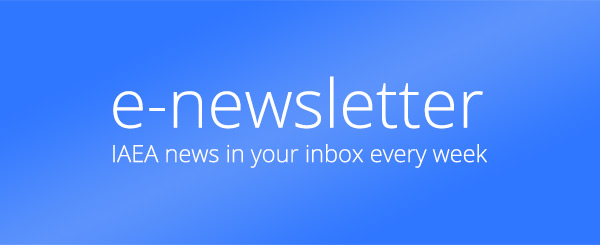This year´s ESARDA Annual Meeting has special significance for the Safeguards Community because we are celebrating a number of significant anniversaries: 50 Years of the Euratom Treaty, 25 years of the French Support Programme and 50 Years of the IAEA, 50 Years of Atoms for Peace. I would like on behalf of the Director General and the staff of the IAEA to express sincere appreciation for the collaboration and support from Euratom and the French Support Programme in our work. The IAEA relies heavily on Member State support, without which our task would be unimaginably more difficult. So, we mark this anniversary celebration as a commitment to the future, to continued collaboration and support and in particular to the implementation of Integrated Safeguards in all NNWS of the EU.
It is also a pleasure for me to attend this Annual Meeting because it provides an opportunity for an exchange of information and experience on many aspects of international safeguards and nuclear non-proliferation. This for me, as Head of the Department of Safeguards, is an exciting arena because it gives me and my staff a glimpse at a number of tools that may be beneficial, or even essential, to our work in the future. In turn, some of my staff will be presenting parts of our work, and I hope that we can manage to equally spark your interest and enthusiasm.
Safeguards and nuclear material management and accountancy have changed dramatically over the years - I believe we are all we aware of this. The challenge for all of us in the continuous race against nuclear proliferation is to address these changes as quickly and effectively as possible. We also endeavour to monitor future trends in order to minimize as far as possible any surprises, and to ensure that we remain adaptable and able to respond decisively. The Research and Development Programme for Nuclear Verification in the IAEA is a key element of our efforts to "stay ahead of the game" and ensure that we are as well equipped as possible to face future challenges.
The Department of Safeguards is currently pursuing, among others, R&D projects in the areas of:
-
- Enhanced information analysis architecture and understanding nuclear trade mechanisms;
-
- Novel technologies, including NDA techniques;
- Unattended Remote Monitoring Systems.
One of the major shifts since the commencement of Safeguards has been the collection, analysis and evaluation of information. Collection, analysis and evaluation of information is an area that is experiencing a "renaissance" in Safeguards, and will continue to evolve in the years to come. Information is at the heart of modern verification; in fact, we frequently refer to our work as being information-driven safeguards.
The safeguards conclusions that we draw every year for each State with a safeguards agreement in force are based explicitly on the evaluation of all information available to the Agency. However, with current resources and techniques there are clear limits to how much information can be evaluated - and the amount of information available is constantly growing. New technologies and well-trained staff can offer real solutions for the collection and analysis of these increasing volumes of information.
As we look even further into the future, beyond the early years of the next decade, we can see that proliferation resistance issues will require consideration. Although we have begun to explore better control of access to nuclear fuel cycle technology through initiatives such as multinational approaches to parts of the nuclear fuel cycle, and ensuring reliable supply of reactor fuel, novel technologies will be an additional, and essential, component of safeguards work in these areas. Advancements such as INPRO, GEN IV and fast reactors will also need to be monitored with a view to their needs for safeguards.
We are also examining a broad range of new technologies for their applicability in nuclear material verification. These include: laser induced breakdown spectrometry, noble gas analysis, light detection and ranging for monitoring gaseous atmospheric pollutants, optical stimulation luminescence, and semiconductor sensors for UF6, (uranium hexafluoride).
The IAEA does not have the means to perform its own R&D and it relies solely on Member State support in this regard. We have received, for example, invaluable support from the French Support Programme in the areas of satellite imagery, information analysis, staff training and in particular in the development of equipment. As we celebrate the many years of cooperation from both Euratom and the French Support Programme, we look forward to their continued commitment to supporting us in providing the international community with the best possible assurances about the peaceful use of nuclear energy.
We can also benefit from the support of organizations, such as those here this week, capable of helping us in the development of advanced technologies that will provide effective solutions to verification challenges in the future.
Our objective at the IAEA is to continue to verify, in an impartial and independent manner, that States are honouring their safeguards obligations. In this regard we are always looking to, and searching for, any tools and approaches that will make our work more effective and efficient: I have no doubt that the extensive scope of this Annual Meeting will give us much to consider. Thank you.


